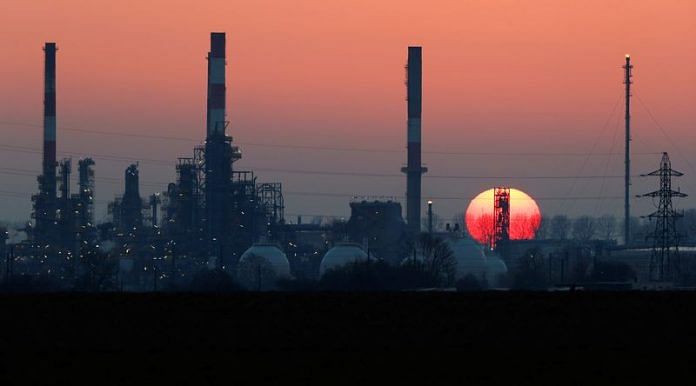By Paul Carsten
LONDON (Reuters) -Oil prices rose for a third day on Wednesday after U.S. crude inventories grew less than expected and a cut in the forecast for output growth in the U.S., the world’s biggest producer, reduced the likelihood of oversupply.
Brent crude futures rose 51 cents to $79.10 a barrel as of 1412 GMT, while U.S. West Texas Intermediate crude climbed 57 cents to $73.88.
U.S. crude stocks fell short of analysts’ forecasts, American Petroleum Institute figures showed. U.S. government weekly data on inventories will be released later on Wednesday. [EIA/S]
The U.S. Energy Information Administration (EIA) also cut on Tuesday its 2024 outlook for domestic oil output growth, putting it far lower than last year’s increase and predicting it would not reach December 2023’s record levels until February 2025.
This all strengthened the case that the oil market will be balanced in 2024, analysts at Haitong Futures said in a note, adding that oil prices should remain in a $10 range around current levels.
U.S., Qatari and Egyptian mediators prepared a diplomatic push to bridge differences between Israel and Hamas on a ceasefire plan for Gaza after the Palestinian group responded to a proposal for an extended pause in fighting and hostage releases.
Traders are following the situation in the Middle East, especially Iranian-backed Houthi rebels’ attacks on shipping in the Red Sea that have disrupted traffic through the Suez Canal, the fastest sea route between Asia and Europe and one that carries nearly 12% of global trade.
“While we are seeing disruptions to trade flows as a result of Red Sea developments, oil production remains unchanged as a result,” ING analysts Warren Patterson and Ewa Manthey said in a note, commenting on oil’s lack of a risk premium.
In the longer term, the International Energy Agency (IEA) said on Wednesday that India is expected to be the largest driver of global oil demand growth between 2023 and 2030, narrowly taking the lead from top importer China.
That comes as struggling large economies, including China’s, dent confidence in the global oil demand outlook.
In Germany, industrial production fell more than expected in December, the federal statistics office said, highlighting weakness in the backbone of Europe’s largest economy.
(Reporting by Paul Carsten in London and Arathy Somasekhar and Muyu Xu; Editing by Paul, Christian Schmollinger, Louise Heavens, David Evans and Barbara Lewis)
Disclaimer: This report is auto generated from the Reuters news service. ThePrint holds no responsibilty for its content.



